Northern Resilience Phase 3 (2022)
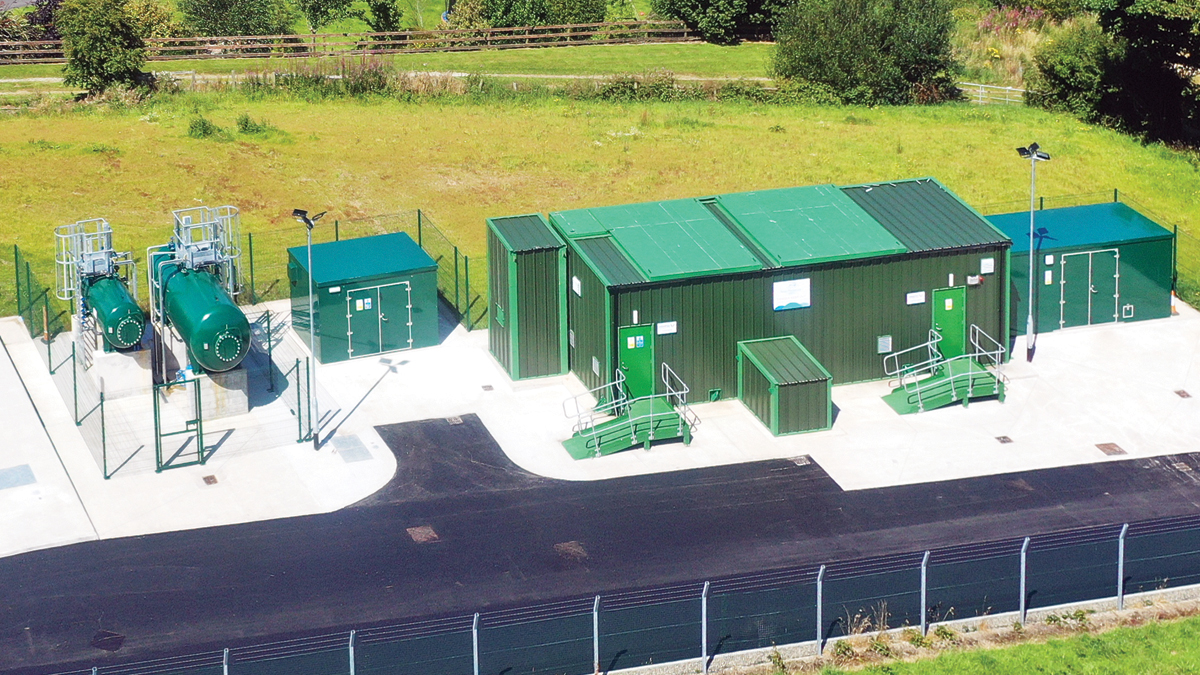
Moys Water Pumping Station completed site - Courtesy of BSG Civil Engineering Ltd
There is currently limited ability within the existing Northern Resource Zone to transfer water between WTW demand zones during onerous operating conditions or during a major incident at any one of the WTWs. At Carmoney WTW recent flooding at the River Faughan disabled the abstraction plant and raised the pollution risks associated with the nearby landfill site. These incidents raised concerns associated with security of supply and resilience of the current water supply system. NI Water’s high-level concept solution was to develop mobile/modular water pumping stations and associated site works, which could be integrated into the existing network and provide capacity for increased emergency supplies across the region of up to 24 MLD should issues arise within Carmoney, Ballinrees or Caugh Hill WTWs.
Project drivers
The main project drivers were:
- To improve network flexibility.
- Design a product that could be relocated.
- Reduce project risk.
- Reduce project programme.
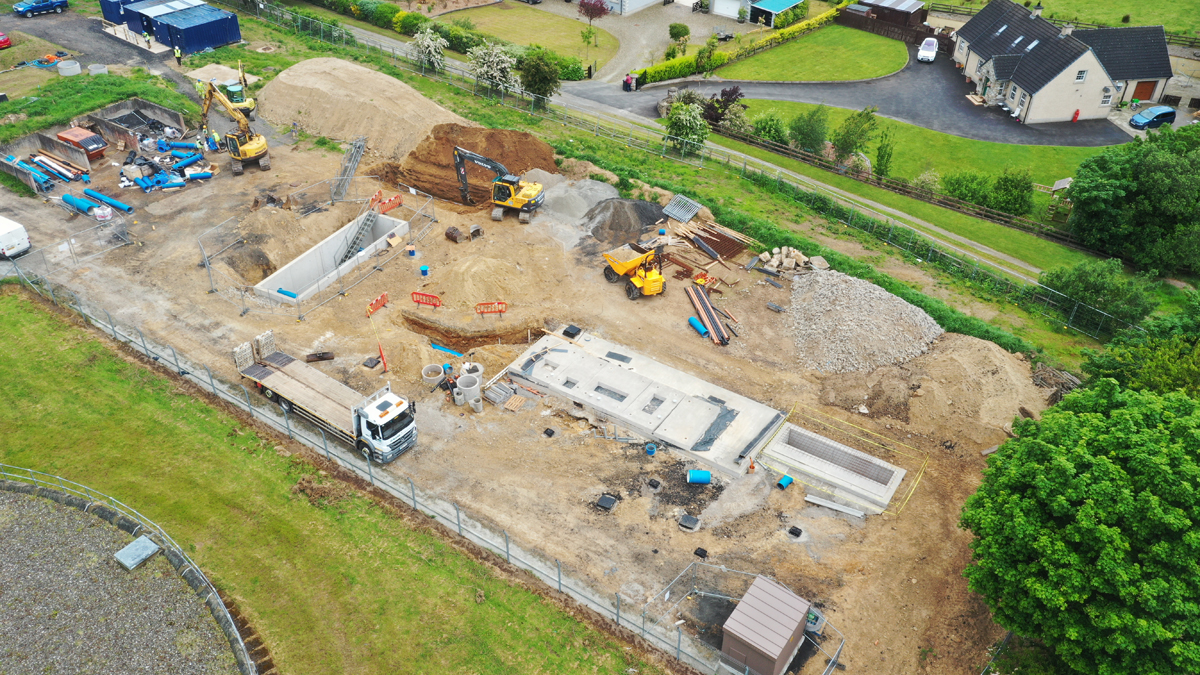
Moys PS during construction – Courtesy of BSG Civil Engineering Ltd
The solution
The solution to provide security of supply within the Northern Resource Zone was completed in several stages. Phases 1 and 2 are complete and involved modifications within the Carmoney WTW Demand Zone to permit alternative supply from other sources. Phase 3 involved the construction of new mobile water pumping stations (WPS) located at Ballinrees WTW and Moys Service Reservoir and included all ancillary infrastructure to allow the transfer of water from Ballinrees WTW and/or Caugh Hill WTW to the Carmoney WTW demand zone.
The outline solution consisted of:
- New pumping stations located in Ballinrees WTW and Moys Service Reservoir.
- New surge system and LV feeder located at both Ballinrees and Moys.
- New break pressure tank on the Windyhill Road, Coleraine. New pipework dualling on Windyhill Road, Coleraine.
- Various new automated valves and existing valve modifications.
- Chemical dosing at Avish Hill Service Reservoir.
- TDN Links and SCADA system to allow safe operation.
As this project was a first of its kind for NI Water, it was important that they partnered with a team who had significant off-site and modular design experience. Through an early contractor involvement (ECI) scheme, NI Water engaged McAdam as project managers and BSG Civil Engineering Ltd as the main contractor; having previously fulfilled these roles for Phases 1 and 2.For Phase 3, BSG Civil Engineering engaged RPS as designer and Drilling Pumping Supplies (DPS)/EPS Group for the development of the modular pumping stations. The open collaboration between all stakeholders allowed for seamless information transfer between all parties over the project’s lifetime.
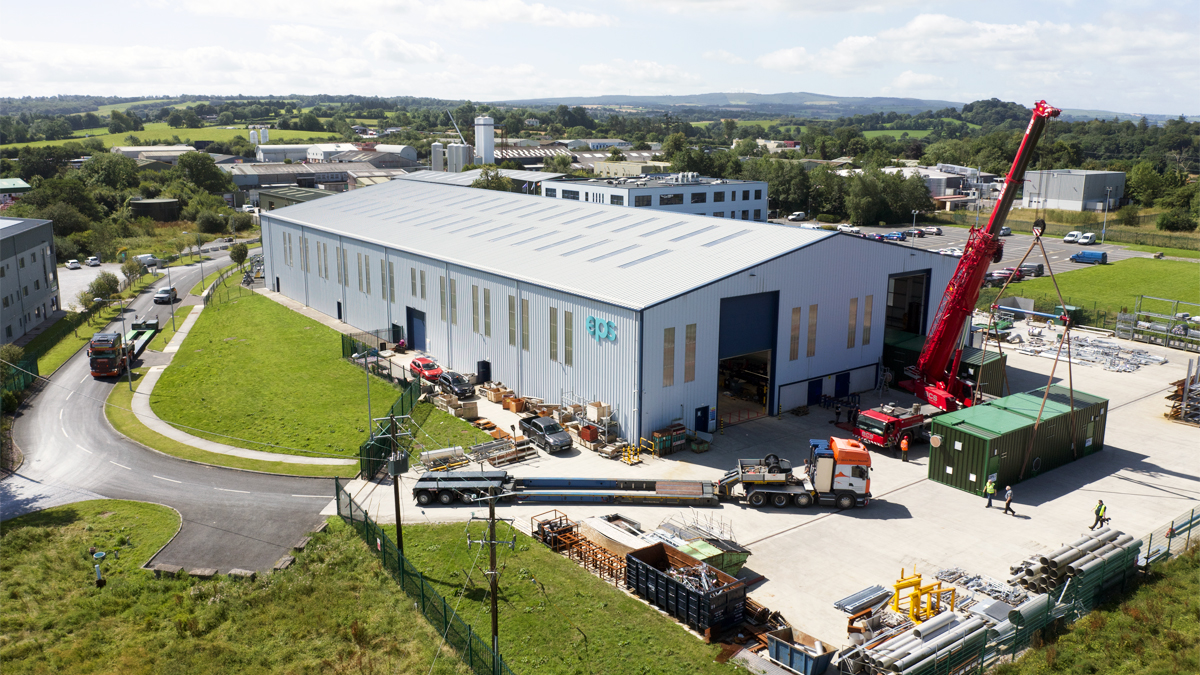
EPS factory where the modular pumping stations were constructed – Courtesy of BSG Civil Engineering Ltd
Design development
The complex design process for Phase 3 was a successful collaborative effort by all team members, each bringing their respective strengths and expertise to develop the final design output; ensuring that all aspects of all modes required by the NI Water could be delivered.
Specialised techniques included digital engineering and DfMA (design for manufacture and assembly) and off-site delivery principles for the water pumping station units, which fed into the civil design team to ensure all on-site integration points were within the specified tolerances.
Modelling, hydraulic & civil design
Extensive modelling work by WSP had been ongoing for a period of time prior to commencement of the Phase 3 ECI project, which then fed into the initial scope and design development for the proposed scheme. Armed with the data from the hydraulic modelling, RPS commenced civil design detailing. However, there was also a further requirement to complete a surge analysis on the system. Hydraulic Analysis Ltd were engaged by RPS to complete the surge analysis and reporting.
The civil engineering design comprised a range of elements including:
- Site layout detailing.
- Trunk main pipework layouts and connection detail arrangements.
- Pipework thrust restraint design.
- RC structures, chambers and support plinths.
- RC structural restraint for the modular pumping station units.
- Drainage and ducting.
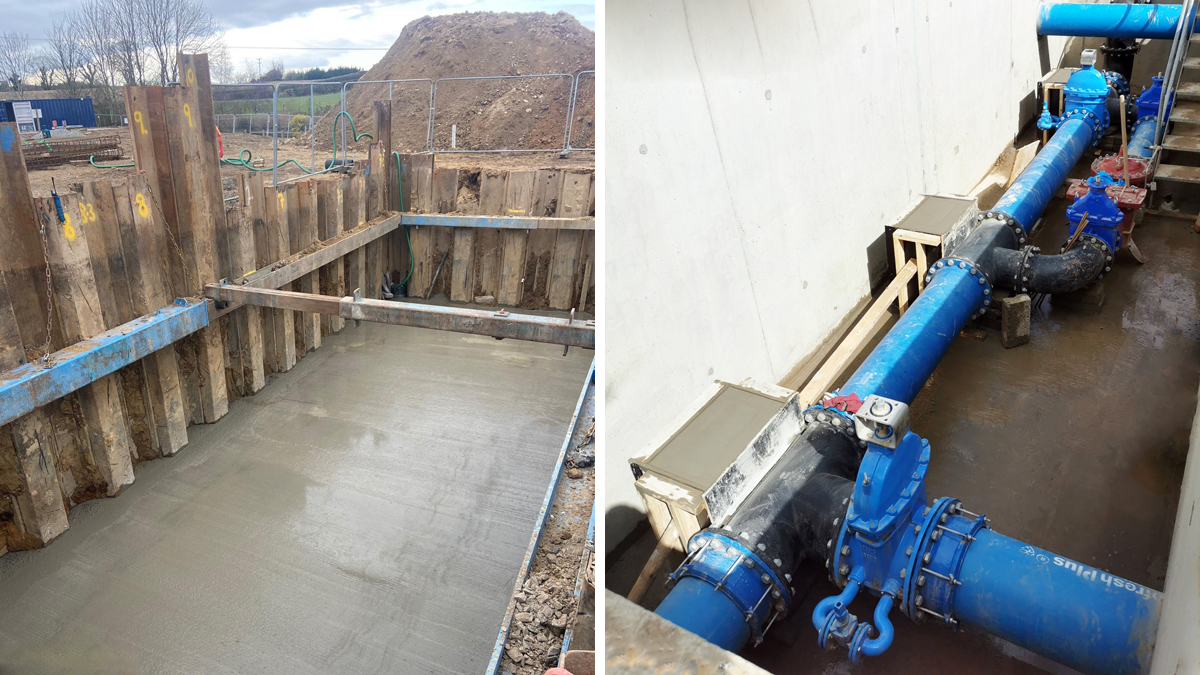
(left) Temporary works arrangement required for the Moys valve chamber and (right) Moys valve chamber following pipework installation – Courtesy of BSG Civil Engineering Ltd
Modular pumping station designs
The modular pumping stations constructed at Ballinrees WTW and Moys Service Reservoir had multiple duty requirements in order to deliver all specified modes of operation for the variance of flows and pressures – ranging from 24MLD at 16.6 bar to 4MLD for freshening modes (utilised to keep pipework fresh when not in full use).
The pumping station units needed to have the ability to work independently or as part of a larger network system and they needed to be fully transportable should the need arise to move the system elsewhere. The DPS team developed two versatile modular pumping station units in association with EPS Group and KSB Ltd that would perform across a number of flows and pressures to meet the project requirements.
Some of the digital tools used to enhance the project outcomes included:
- Solidworks and Revit: 3D design platforms were deployed to create the detailed 3D models to allow all engineering activities to be conducted.
- Visual Project Initiation: This was deployed in two sessions along with a VR (virtual reality) walk through with the design team to allow final comments prior to construction.
- BIM 360 Glue: A cloud-based tool to share 3D models, allowing effective interface with the federated 3D model for all stakeholders. It was also used for visualisation demonstrations with stakeholders.
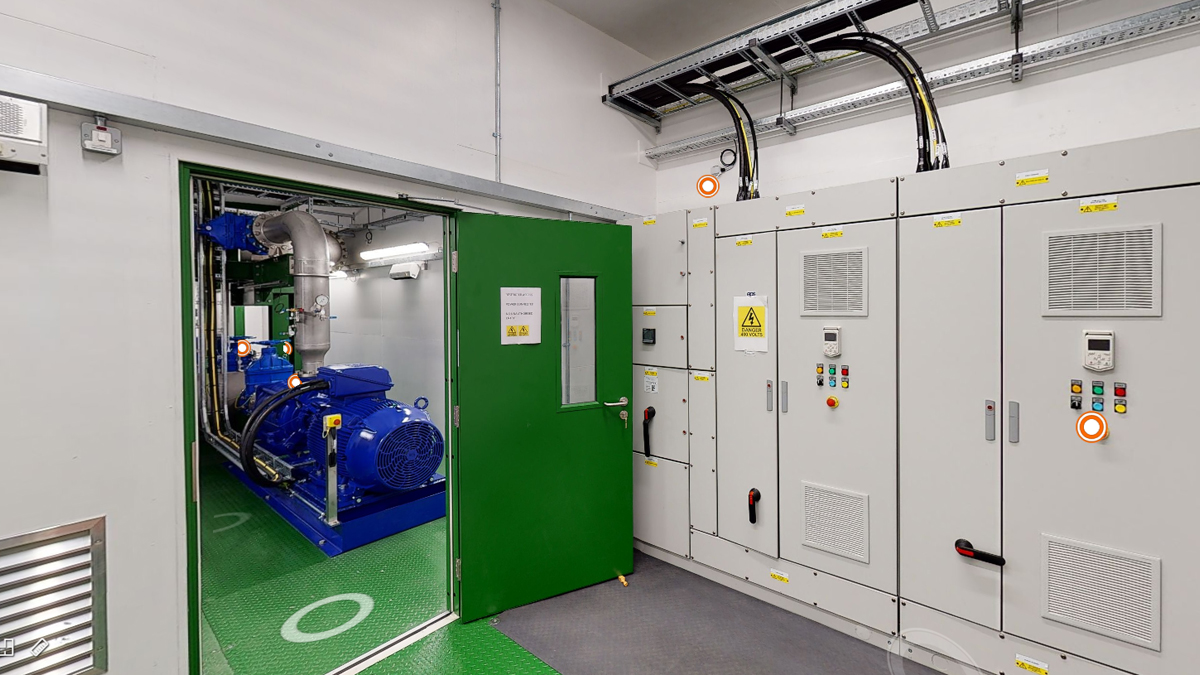
Image from 3D model – Courtesy of BSG Civil Engineering Ltd
By designing, manufacturing and testing the two modular pumping stations off site, programme benefits were realised by reducing construction programme by four months along with the associated costs, as well as mitigating risk on a number of complex challenges. DfMA principles were applied to over 90% of the overall MEICA scope of the project, with the exception of the surge systems, which were constructed on site.
The design also allows for interchanging of pumps and easy removal of equipment to provide the client with a number of additional benefits including flexible system performance, ease of maintenance and robust control of the network in emergency periods going forward.
By reducing civil works, eliminating on-site fabrication, minimising the need for hot work and the majority of on-site working at height, the project was able to significantly reduce risks related to safety, quality and weather-related disruption, and ensure that the delivery of the scheme remained on programme.
Northern Resilience Phase 3: Supply chain – key participants
- Project manager: McAdam
- Main contractor: BSG Civil Engineering Ltd
- Civil design: RPS
- Hydraulic model: WSP
- Surge analysis: Hydraulic Analysis Ltd
- Temporary works design: MEA (NI) Ltd
- Modular pumping stations: Drilling & Pumping Supplies (DPS)
- Modular pumping stations: EPS Group
- Pumps: KSB Ltd
- Mobile chlorination unit: Aquadose Ltd
- Concrete works: K&J Formwork Ltd
- Precast concrete: FP McCann Ltd
- Under-pressure tee connection: Waterworx Ltd
- Pipework: O’Kane Civil Engineering
- High voltage works: Scotts Electrical Services Ltd
- MCCs: R&R Engineering
- Kiosks: Quinshield Ltd
- Drag box units: Trench Control Ltd
- Access covers: EJ Ireland Access Solutions Ltd
- DI pipework: APP Fusion Group
- Actuators: Flow Technology Services Ltd
- Valves: Industrial Valve Specialists Ltd
- Fencing: Kane Contracts
- Concrete & surfacing: Northstone Materials
- Quarry products: Whitemountain Quarries Ltd
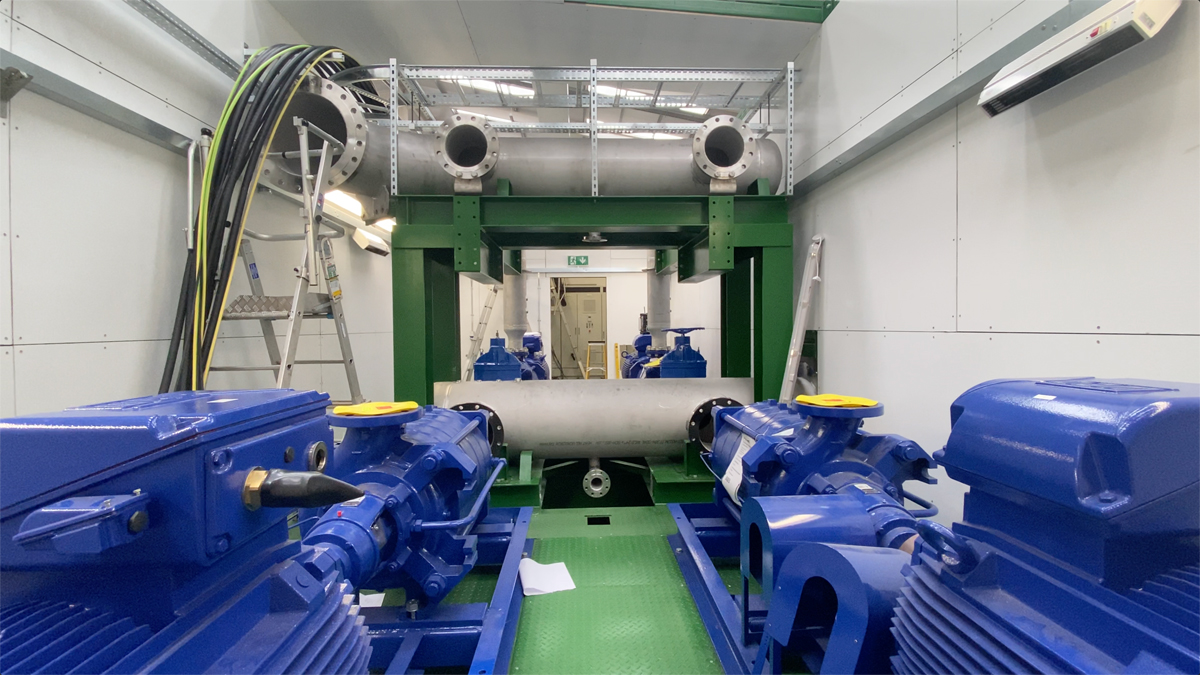
Modular pumping station fit out within EPS factory – Courtesy of BSG Civil Engineering Ltd
Civils & MEICA installations & commissioning
Modular pumping station reinforced concrete plinth: The modular pumping station skid and pump support frame has been designed by DPS/EPS to include integral thrust restraint. The thrust forces are then transferred to the container foundation via metalwork brackets and holding down bolts. The container foundation was designed as a ground supported reinforced concrete slab with cable pit and downstand shear key. Global force resolution of the holding down forces was completed to obtain the worst case horizontal and vertical forces as a result of pump operation.
The foundation slab and shear key was designed to spread the load from the pump set and also resist the global disturbing forces as a result of pump operation. Ground conditions at formation were analysed using plate loading tests and the modulus of sub-grade reaction used to design the foundation slab.
Pipework connections: At both Moys PS and Ballinrees PS, connections had to be made into the existing network to establish the inlet connection to the new pumping stations and the outlet connection back into the network. Each connection had to be carefully planned alongside NI Water to reduce the impact to customer supply. All efforts were made to reduce the number and duration of each shutdown. At Moys Pumping Station, both the inlet and outlet connection were completed during the same 8-hour shutdown. All measures were taken to assist with each shut down in terms of planning drain-down points, pre-assembling fittings where possible and having systems in place to provide initial thrust restraint whenever flows were turned back on.
Clear communication was important between all parties including BSG Civil Engineering, NI Water and impacted stakeholders to ensure all connections were completed successfully.
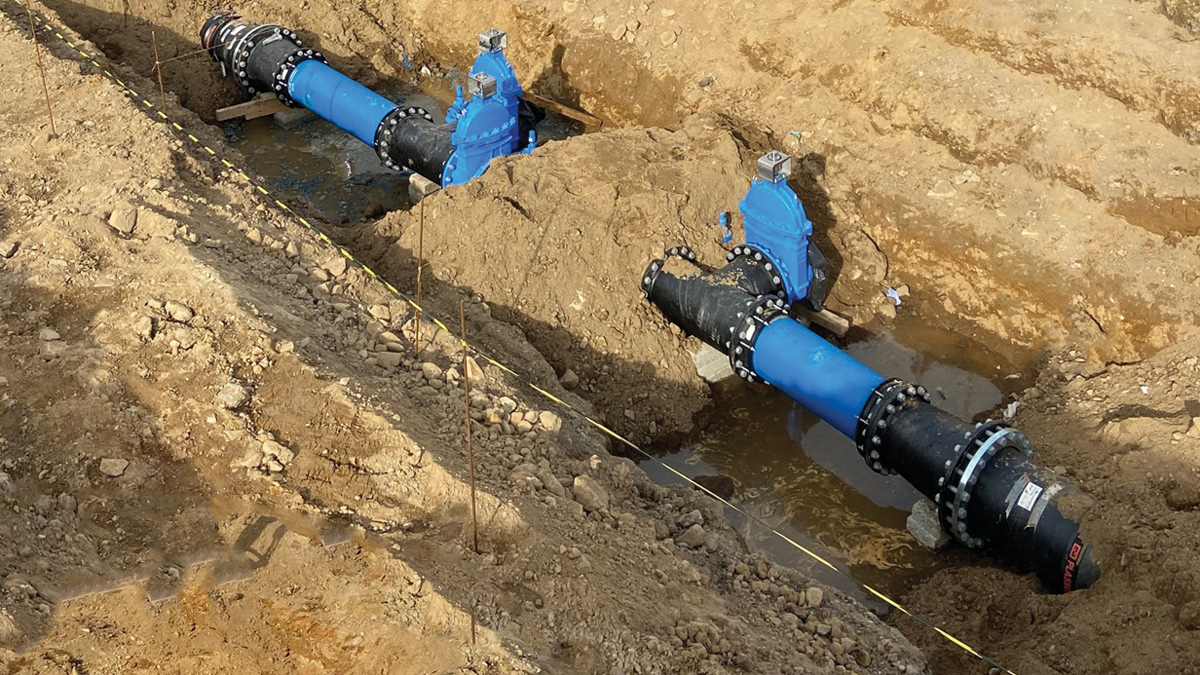
Inlet and outlet connections at Moys WPS – Courtesy of BSG Civil Engineering Ltd
Under-pressure tee connection: At Ballinrees PS, due to the volume of customers affected by the shutdown required for the inlet connection, it was decided to complete this as an under-pressure connection. Waterworx was appointed as the subcontractor to complete this item of work which involved installation of an under-pressure tee and gate valve onto a 600mm diameter DI outlet main from the clear water tank. The connection was completed over a 2-day period without any impact to the customer supply.
Day 1 involved exposing the existing main, set-up of the under-pressure tee fitting and testing of the fitting. On day 2, the main was drilled and the coupon extracted. Following the extraction of the coupon the isolation valve was then closed and the drilling equipment disassembled.
Site pipework installation: All site pipework and structures were completed within each of the fixed sites at Moys and Ballinrees in advance of the modular pumping station deliveries and MEICA works commencing on site. The install of this pipework had its challenges due to its complex nature. The routing of pipework from the connection points with the existing trunk mains to the modular pumping station location required numerous vertical and horizontal bends to pass existing services and structures as well as branch connections to surge vessels and scour points.
Due to the significant pressures involved, typically in excess of 16 bar, multiple thrust blocks were required to provide the required restraint. The install of this pipework and thrust restraint network required a high level of quality control on site to ensure all fittings and bolt sets were adequately torqued and that anchor blocks were properly installed to provide the required restraint.
At the pumping station locations, the vertical pipework had to be installed to a tolerance of +/- 2mm in all directions for the connection to fixed points on the pumping skid itself. All site pipework was tested in advance of the pumping station units arriving on site. This was achieved through careful monitoring of the pipework throughout the install and then 3D scanning of the finished plinth and pipework arrangement on completion of the install. These scans were then issued to DPS/EPS for review and acceptance prior to delivery of the unit.
Windyhill Break Pressure Tank (BPT) & trunk main dualling
As part of the hydraulic design of the scheme, an additional BPT was required adjacent to an existing BPT at the highest point on the system on Windyhill Road, between the Ballinrees and Moys sites. The existing Ballinrees PS pumps water to this point, and from here flows then gravitate to the Moys pump set.
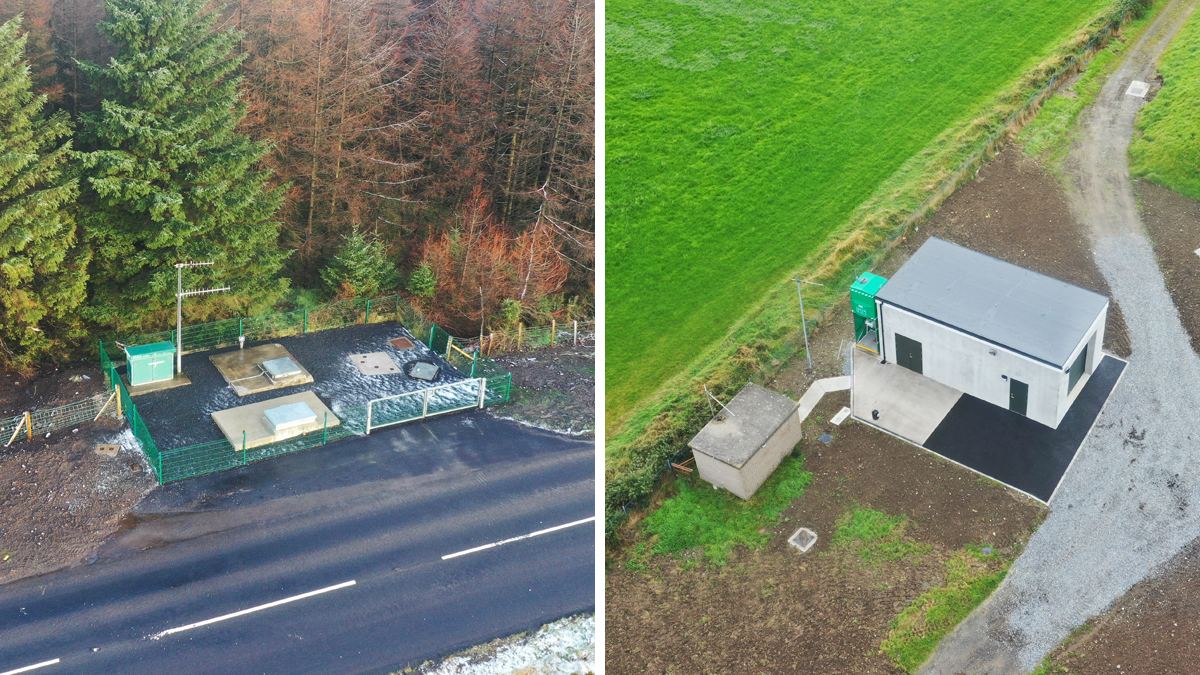
(left) Windyhill Break Pressure Tank completed site and (right) Avish Hill SR: chlorine dosing building – Courtesy of BSG Civil Engineering Ltd
The construction of the 4.1m x 2.25m x 3.5m deep RC tank provided several challenges due to the restricted space available on site, traffic management considerations, and having to keep the adjacent BPT live throughout construction. The new tank was formed in situ, with the excavation supported using 7.5m drag box units provided by Trench Control. Following completion of the tank, the structure was water tested, disinfected and the inlet and outlet pipework connections completed and brought online immediately to give NI Water the benefit of the additional storage at this point.
The hydraulic model also indicated the requirement to install a dual section of trunk main immediately downstream from the BPT site which involved the laying of an additional 750m of 400mm trunk main adjacent to the existing main along with associated cross connections.
Avish Service Reservoir chlorine dosing system
As an additional part of this scheme, BSG Civil Engineering was tasked with design, procurement and commissioning of additional chlorine boosting at the Avish Service Reservoir site. As this chlorine boosting was only going to be used occasionally, when the new emergency pumping stations would be used, it was decided to use an innovative mobile boosting system.
The trailer-mounted system is stored in a purpose-built cavity blockwork SR2 rated building measuring 9.5m x 5m, with IBC chemical storage and can be transported to other NI Water sites as required. It is capable of a range of dosing rates from 0.5 up to 12MLD. This item of work also required the construction of new dosing and sampling chambers on site, as well as provision of a concrete spill area for chemical delivery and emergency shower facilities.
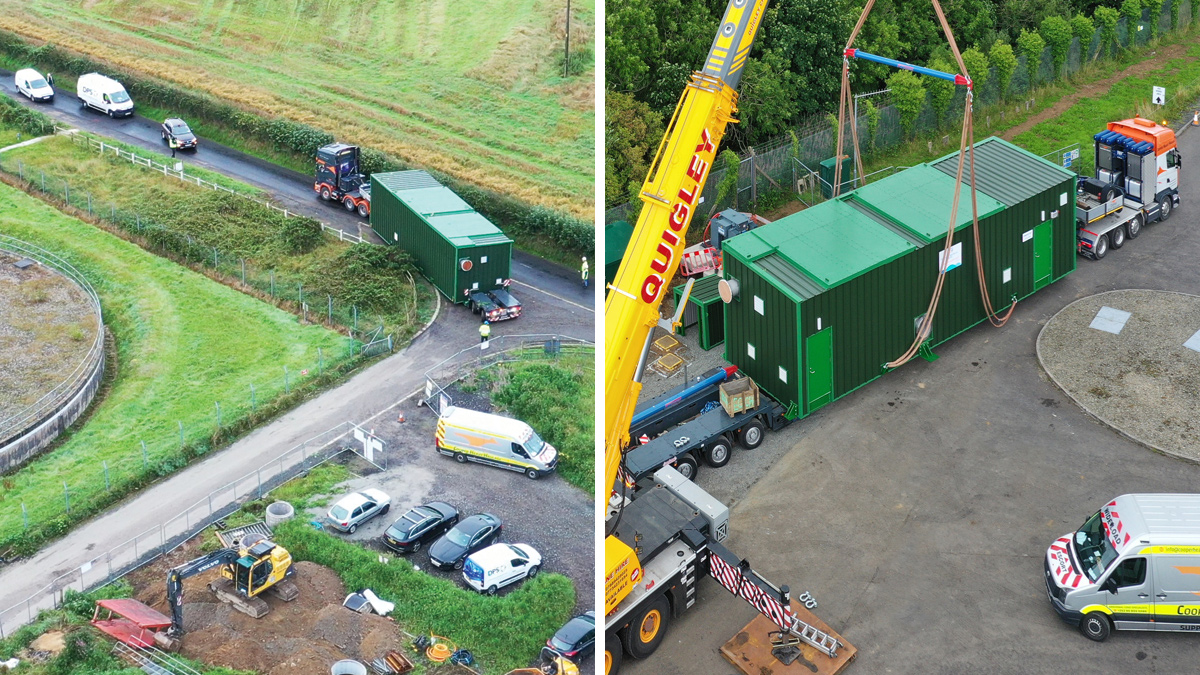
(left) Delivery of pumping station unit to Moys and modular pumping station installation underway (right) – Courtesy of BSG Civil Engineering Ltd
Pumping station units delivery & installation
The modular pumping stations were escorted from EPS in Mallow Co. Cork to site in August 2021, with the route being planned and agreed alongside police and road authorities north and south of the border. The pump sets were each installed using a 230T crane and placed in one lift from the ultra-low loader directly onto the prepared concrete plinth. They were then fixed down using a holding-down bolt arrangement.
ICA overview
This aspect of the scheme was quite complex and took extensive planning and liaison prior to and during the installation and commissioning phase. Due to the extent of network impacted by this system, the ICA control and automation arrangement for each control & operational mode was designed to be fully automated; removing the requirement for manual on-site operator works during period of running.
The two site control systems comprise of a DCC (distribution control console), MCC (motor control centre) and surge vessel control panel. All the individual systems communicate with the DCC via Profinet. The system is operated via HMI and NI Water Telemweb interfaces enabling three locations of control. The control system utilises site-to-site communications to operate each pumping station and associated actuated valves in sequence control. The site-to-site system comprises of seven different locations which use the Talus T4e outstation to communicate digital and analogue signals to enable the full automatic operation of the control system. A mixture of radio, 4G and TDN (telemetry data network) is used for this process.
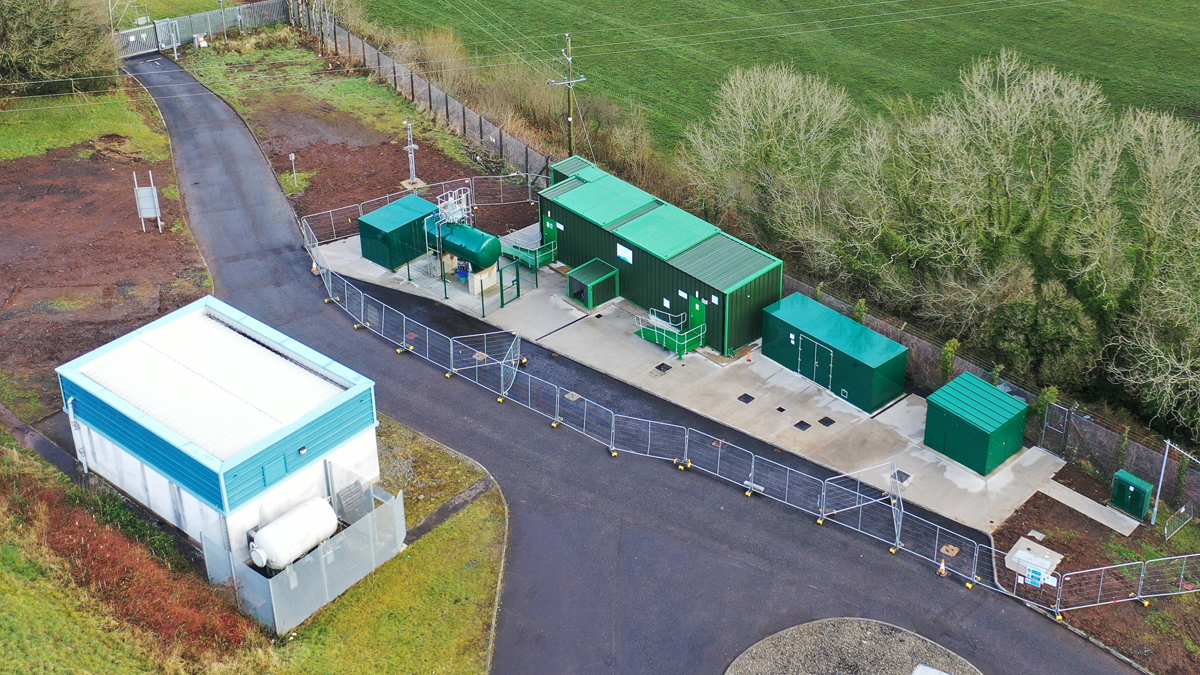
Ballinrees WPS completed site – Courtesy of BSG Civil Engineering Ltd
Summary
Through careful planning, meticulous attention to detail and by adopting a teamwork approach from the outset with integrity and trust towards the common goal, the project team has been able to deliver excellence in the execution and commissioning of the project. At the time of writing (September 2022) the scheme is in the closing stages and once fully complete, will provide NI Water with a resilient arrangement to ensure drinking water supplies can be maintained across its Northern Resource Zone.







